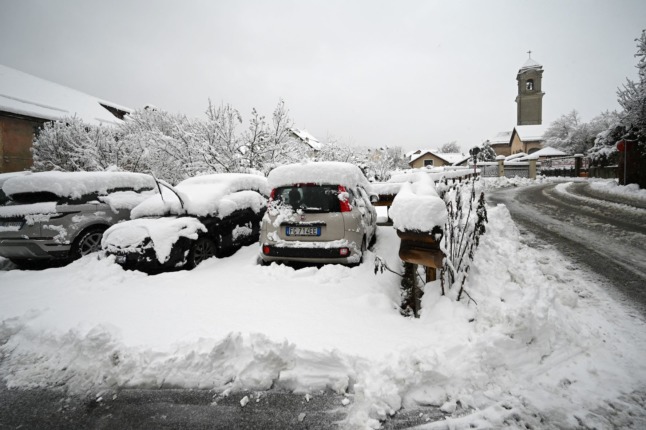The pilot project will see a large part of Friedrichstraße, in the Mitte district, closed to traffic.
From the beginning of June until the end of November this year, a car-free section between Leipziger Strasse and Französische Strasse is planned, as well as a 'traffic-calmed' area at Checkpoint Charlie.
The aim is to find out what effects this will have on pedestrian, bicycle, car and delivery traffic in the area and what users of Friedrichstraße will gain from it.
The street forms part of the city's main shopping district and is a magnet for tourists.
Berlin's local government presented the plans for the first time to residents, businesses and other interested parties on Wednesday.
They are to be analysed and discussed afterwards. As reported by the Berliner Morgenpost, the project also aims to make the sidewalks (pavements) twice as wide as they are currently.
Meanwhile, bicycle lanes will also be widened out.
According to the Berlin Senate, the aim of the traffic experiment is to increase the attractiveness of Friedrichstraße – for Berliners and tourists – and also to strengthen the city's trade and retail sectors by increasing footfall.
The traffic initiative Changing Cities welcomed the news.
“We are very pleased that by making Friedrichstraße, more attractive, ecological issues and the reorganisation of commercial traffic is also being addressed,” Stefan Lehmkühler said.
But not everyone is happy.
Oliver Friederici, transport policy spokesman for the Berlin CDU faction, warned against a hasty closure of the street, saying residents and businesses needed to be more involved with the proposals.
READ ALSO: Berlin the latest German city to experiment with going car-free
The move isn't the first time that the idea of pedestrians reclaiming the streets of Berlin, and other cities in Germany, has been discussed.
In 2018 Friedrichstraße was closed to traffic for several hours in December and there have been several
Traffic was stopped at the nearby Brandenburg Gate in 2002, while plans were announced in 2017 to restrict traffic on Unter Den Linden from 2019. Hamburg has also considered making areas of the city car free in the not-too-distant future.
The Berliner Morgenpost reported previously that the Berlin Senate had recommended banning vehicle traffic around the Checkpoint Charlie section of Friedrichstraße – only a few hundred metres south – for safety reasons.
More than 26,000 foot crossings are made across the street in the Checkpoint Charlie area daily, with restrictions recommended to all traffic other than taxis, bicycles and night buses.
Previous plans have included turning Friedrichstraße into a 'Sunday Shopping Street' by closing it to vehicle traffic on Sundays.
Vocabulary
Car-free – autofrei
Traffic-calmed sector – (der) verkehrsberuhigter Bereich
Pavements/sidewalks – (die) Gehwege
Senate administration – (die) Senatsverwaltung
We're aiming to help our readers improve their German by translating vocabulary from some of our news stories. Did you find this article useful? Let us know.




 Please whitelist us to continue reading.
Please whitelist us to continue reading.
Member comments